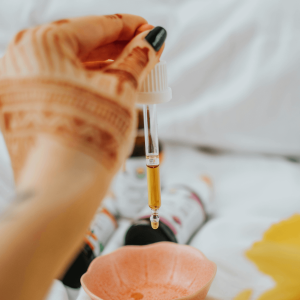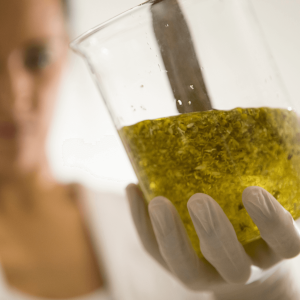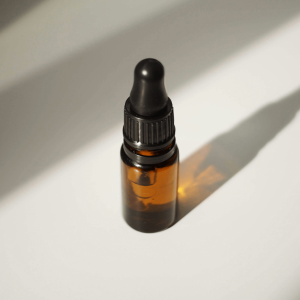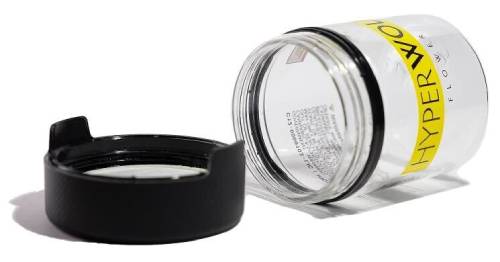In the wide world of cannabis products, tinctures have carved out a niche that blends science with simplicity. Whether you’re a seasoned stoner or just dipping your toes into DIY cannabis, tinctures are an excellent starting point for anyone interested in making their own weed-infused remedies. They’re discreet, customizable, shelf-stable, and surprisingly easy to whip up at home.
If you’ve ever wondered how to make cannabis tincture, this in-depth guide will walk you through the what, why, and how—with plenty of science-backed insights and practical tips along the way.
What Is a Cannabis Tincture?
A cannabis tincture is a concentrated liquid extract made by soaking ground cannabis flower in high-proof alcohol to pull out the cannabis plant’s therapeutic compounds, including THC, CBD, and terpenes. Unlike cannabis concentrates, think of it as a potent potion that captures all the best parts of cannabis without the need for smoke or vapor.
Tinctures are usually administered sublingually (under the tongue), but they can also be added to food, drinks, or even applied topically in some cases. Alcohol tinctures offer a level of precision and control that makes them ideal for both medical and recreational users.

Benefits of Cannabis Tinctures
Cannabis tinctures have a lot going for them as plant medicine. First, they allow for accurate dosing, which is key for both beginners and those using cannabis medicinally. They also provide a smoke-free experience, which is great for anyone looking to avoid the respiratory risks of smoking.
Another major perk? Speed. When taken sublingually, tinctures can kick in within 15 to 45 minutes, much faster than edibles. Tinctures are also incredibly versatile, making them a go-to option for cooking, crafting, and even skincare.
Plus, when stored properly, alcohol-based tinctures have a shelf life of several years—a serious win for DIYers.
How Do Tinctures Work in the Body?
The effectiveness of cannabis tinctures depends largely on how they are consumed. When taken sublingually, the cannabinoids are absorbed directly into the bloodstream through the tissues under the tongue. This bypasses the digestive system, allowing for quicker onset and more bioavailable effects.
In contrast, when tinctures are swallowed or mixed with food, they behave more like traditional edibles. The cannabinoids pass through the digestive tract and liver, where THC is converted to 11-hydroxy-THC, a more potent and longer-lasting form.
So, depending on your method of consumption, your experience with a tincture can vary significantly.

Are Tinctures Stronger Than Edibles?
Tinctures and edibles both deliver potent effects, but the experience can differ. Edibles tend to produce a more intense and longer-lasting high due to the liver’s conversion of THC. Tinctures taken sublingually may feel more manageable and easier to control, especially for those who prefer not to commit to a six-hour journey.
Ultimately, it comes down to dosage and delivery method. With tinctures, you have the added benefit of microdosing with precision—a level of control that’s often lost with edibles.
THC vs CBD Tinctures: What’s the Difference?
THC and CBD tinctures each bring their own unique set of effects and benefits. THC tinctures are psychoactive and can offer euphoric, relaxing, or energizing effects depending on the strain. They’re often used for chronic pain relief, appetite stimulation, and recreational enjoyment.
CBD tinctures, on the other hand, are non-intoxicating and commonly used for anxiety, inflammation, and general wellness. Many users also opt for hybrid tinctures that combine THC and CBD in specific ratios like 1:1 or 20:1 to balance therapeutic benefits with mild psychoactivity.
Choosing the Right Strain for Your Tincture
The strain you choose plays a huge role in determining the effects of your tincture. Want to relax and unwind? Go with an Indica-dominant strain. Need a mental boost? A Sativa or Sativa-leaning hybrid could do the trick.
For a balanced effect, hybrids with a solid mix of THC and CBD may be the way to go. Consider cannabinoid content, terpene profiles, and the type of experience you’re looking for. Keep in mind that certain terpenes—like myrcene, limonene, or linalool—can enhance the entourage effect and further influence the tincture’s therapeutic qualities.
What You’ll Need to Make a Cannabis Tincture
Before you dive into the tincture-making process, it’s best to gather all the essentials. Here’s what you’ll need:
- High-proof alcohol (190-proof grain alcohol like Everclear)
- Cannabis flower or trim (decarboxylated)
- Glass jar with a tight-sealing lid
- Cheesecloth or coffee filter
- Dropper bottles (dark glass is best)
- Small funnel (optional)
- Labels for storage
It’s important to use food-grade, high-proof alcohol to ensure safe and efficient extraction of cannabinoids and terpenes.
Decarboxylation: Why It’s Crucial
Decarboxylation is a fancy word for the process that activates THC and CBD in raw cannabis. When you heat cannabis, it converts THCA into THC and CBDA into CBD—the compounds that interact with your body. If you skip this step, your tincture will be weak and largely ineffective.
To decarb at home, preheat your oven to 240°F (115°C). Source dense, green buds and then spread your broken-up buds on a baking sheet lined with parchment paper and bake for about 40 minutes, stirring occasionally. You’ll know it’s done when your kitchen smells like a dispensary and the weed is light brown and crumbly.
Alcohol vs Oil-Based Tinctures
Alcohol is the traditional solvent for making cannabis tinctures, prized for its efficiency and long shelf life. However, oil-based options (like MCT or coconut oil) are gaining popularity for those who want an alcohol-free alternative. Alcohol extracts more cannabinoids and terpenes, but it can be harsh on the taste buds.
Oil-based tinctures are gentler, though they may spoil more quickly and are less effective at extracting certain compounds. Each has its pros and cons, so the best option depends on your priorities—potency vs palatability, shelf life vs dietary preference.

How to Make a Cannabis Tincture: Quick Overview
Making a cannabis tincture might sound complicated, but it’s really just a matter of steeping, shaking, and straining. Here’s a brief overview:
- Decarboxylate your cannabis.
- Add decarbed cannabis to a jar and cover with alcohol.
- Seal the jar and store in a cool, dark place.
- Shake daily for 2–6 weeks.
- Strain the mixture through cheesecloth to filter the plant material.
- Store in dropper bottles and label.
Now let’s break down the two most common methods: Green Dragon and Golden Dragon.
Step-by-Step: Traditional Green Dragon Method
The Green Dragon method is the classic approach to making cannabis tincture. It involves a longer steeping period but produces a rich, full-spectrum extract.
- After decarbing your cannabis, place it in a mason jar.
- Pour in enough high-proof alcohol to cover the cannabis completely.
- Seal the jar and shake it vigorously.
- Store the jar in a cool, dark cupboard for 2 to 6 weeks.
- Shake the jar once daily to help the alcohol extract the cannabinoids.
- After the steeping period, strain the liquid through a cheesecloth or coffee filter.
- Funnel the tincture into dropper bottles and store in a dark, cool place.
This method is reliable and ideal for those who aren’t in a hurry.
Step-by-Step: Golden Dragon (QWET) Method
QWET, short for Quick Wash Ethanol, is a faster way to make a clean, potent tincture.
- Freeze both your decarboxylated cannabis and alcohol for 24 hours.
- Combine them in a mason jar (1 oz cannabis to 1 cup food grade ethanol alcohol is a common ratio).
- Shake the jar gently and let it sit for 3 to 5 minutes.
- Strain through a coffee filter into a glass container.
- Let the alcohol evaporate slightly to concentrate the tincture, if desired.
This method extracts fewer chlorophylls, resulting in a clearer and milder-flavored product.

Dosage Guidelines for Homemade Tinctures
Dosing tinctures can be tricky, especially with homemade versions. A general rule of thumb is to start low and go slow. To estimate potency, you’ll need to know the THC percentage of your cannabis and how much you used.
For example, if you used 7 grams of 20% THC weed, that’s roughly 1,400 mg of THC total. Divide that by the total volume of your tincture (say, 100 ml), and you’ll have 14 mg per ml. Use this as a guide and adjust according to your tolerance and needs.
How to Use a Cannabis Tincture
There are a few different ways to use cannabis tincture, each with its own onset time and intensity. Sublingual administration is the most effective and fastest. Simply place the desired dose under your tongue, hold for 30 to 60 seconds, then swallow.
You can also add tinctures to smoothies, teas, or baked goods. Just remember: when consumed with food, the effects take longer to kick in but may last longer overall.
How Long Does It Take for a Tincture to Kick In?
The onset time for tinctures depends on how you consume them. Sublingual use typically results in effects within 15 to 45 minutes.
In contrast, ingesting tinctures with food may delay onset to 1 to 2 hours. Factors like metabolism, dosage, and whether you’ve eaten recently all play a role in how quickly you feel the effects.
How Long Do Effects Last?
When taken sublingually, the effects of a cannabis tincture generally last between 2 to 4 hours. If you ingest it like an edible, expect a longer experience—often in the range of 4 to 8 hours.
The duration is also influenced by the potency of the tincture, your tolerance, and your individual body chemistry.
Storing Your Cannabis Tincture
Proper storage is essential for maintaining potency and flavor. Use dark glass dropper bottles to protect the tincture from light degradation. Keep them in a cool, dry place away from direct sunlight and heat sources. Label your bottles with the strain, date, and estimated potency.
Alcohol-based tinctures can last several years if stored correctly, making them one of the most shelf-stable cannabis products out there.
Can You Cook with Tinctures?
Yes, you can absolutely cook with cannabis tinctures—just be mindful of heat. Excessive temperatures can degrade cannabinoids, especially THC. Try adding tincture to sauces after cooking, stirring into dressings, or incorporating into no-bake recipes like energy bites or gummies. Always measure your doses carefully to avoid overmedicating.
Common Mistakes to Avoid
Making your first tincture is exciting, but there are a few pitfalls to avoid:
- Skipping decarboxylation (results in weak tincture)
- Using low-proof alcohol (ineffective extraction)
- Letting it steep in sunlight or heat (degrades cannabinoids)
- Poor labeling (hard to track potency or ingredients)
Avoiding these mistakes will result in a more effective, reliable tincture.

Are Cannabis Tinctures Legal?
Cannabis tincture legality depends on where you live. In states with legal recreational or medical cannabis, tinctures are typically available for purchase and personal production.
However, possession and production may be restricted in states without legalized cannabis. Always check your local laws before making or using tinctures—especially when high-proof alcohol is involved.
Safety Tips for Handling Alcohol-Based Tinctures
Working with high-proof alcohol requires caution. Always work in a well-ventilated space, avoid open flames, and never heat alcohol directly.
Store your tincture out of reach of children and pets, and label it clearly to avoid accidental consumption. Responsible handling ensures a safe DIY experience.
Can You Make Tinctures Without Alcohol?
Yes, tinctures can be made with alternatives like MCT oil, coconut oil, or vegetable glycerin. These options are gentler and suitable for those avoiding alcohol for health or religious reasons. However, they may have shorter shelf lives and lower cannabinoid extraction efficiency.
Oil-based tinctures are ideal for gentle dosing and topical use.
Buying vs Making: Which is Better?
Both store-bought and homemade tinctures have their perks. Store-bought tinctures offer convenience, consistency, and lab-tested potency. Homemade versions, on the other hand, are customizable, cost-effective, and give you full control over ingredients.
If you enjoy DIY projects and want to personalize your cannabis experience, making your own tincture is a rewarding option.
Final Thoughts: Is Making Your Own Tincture Worth It?
If you value customization, cost savings, and a hands-on approach to cannabis, making your own cannabis tincture is absolutely worth it. You don’t need fancy equipment or years of experience—just a little patience and the right ingredients.
Whether you’re using it for relaxation, relief, or creativity, a well-made tincture is a powerful addition to your cannabis toolkit. So go ahead, channel your inner herbalist, and craft a tincture tailored to your unique needs.
How to Make Cannabis Tincture: Frequently Asked Questions
1. What is the best method for cannabis tincture?
If you regularly consume cannabis, the best method depends on your priorities. For maximum potency and a full-spectrum cannabis extract, the traditional Green Dragon method—which involves steeping decarboxylated cannabis in high-proof alcohol for several weeks—is a top choice. However, if you’re short on time or want a cleaner flavor, the Golden Dragon or QWET method (Quick Wash Ethanol Technique) is ideal. It uses frozen cannabis and alcohol for a quick 3–5 minute wash that yields a more potent tincture rich in terpenes and with minimal chlorophyll. If you’re new to tincture-making or want to avoid alcohol, oil-based infusions are a gentle, beginner-friendly alternative, though they may not be as potent or shelf-stable.
2. What is the best liquid for cannabis tincture?
The gold standard for cannabis tinctures is 190-proof grain alcohol (like Everclear). It’s highly effective at extracting cannabinoids and terpenes while offering excellent shelf stability. If Everclear isn’t available in your area, other high-proof, food-grade alcohols (151-proof minimum) can work, but the higher the proof, the better the extraction and preservation. For those seeking alcohol-free options, MCT oil, coconut oil, or vegetable glycerin can also be used—though they’re less efficient solvents and come with shorter shelf lives.
3. How do you make a tincture for beginners?
Start simple. Here’s a basic beginner-friendly method:
Decarboxylate your cannabis by baking it at 240°F (115°C) for 40 minutes. Add the decarbed cannabis to a glass jar and cover it with high-proof alcohol.
Seal and store the jar in a cool, dark place for at least two weeks, shaking it once daily. Strain the liquid through cheesecloth or a coffee filter.
Store the finished tincture in dropper bottles, clearly labeled. This method doesn’t require any fancy equipment and allows plenty of wiggle room to adjust potency or flavor later.
4. How long does it take to make a cannabis tincture?
It depends on the method. If you’re going with the Green Dragon method, you’ll need to let the cannabis steep for 2 to 6 weeks, depending on how strong you want the final product to be. For a faster option, the Golden Dragon/QWET method only takes a few minutes, provided both the cannabis and alcohol are properly frozen in advance. Either way, you should also factor in decarboxylation time (about 40 minutes) and straining/bottling, which adds another 30 minutes or so. So your total time investment can range anywhere from under an hour to over a month.

 Rewards
Rewards




